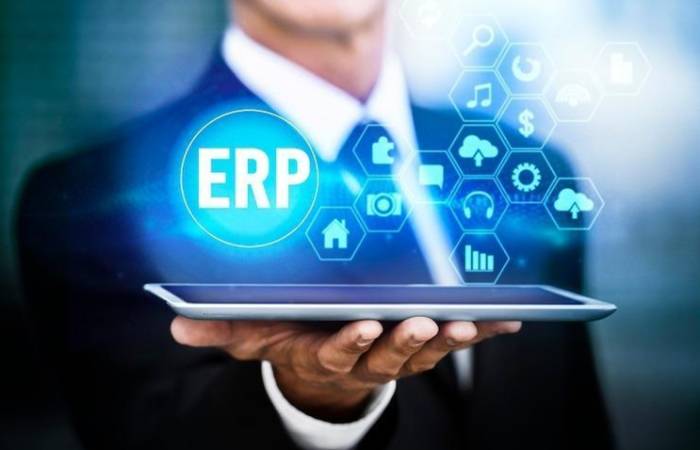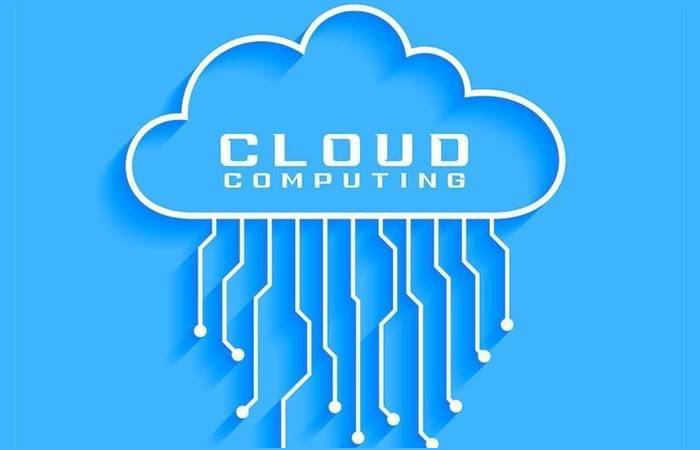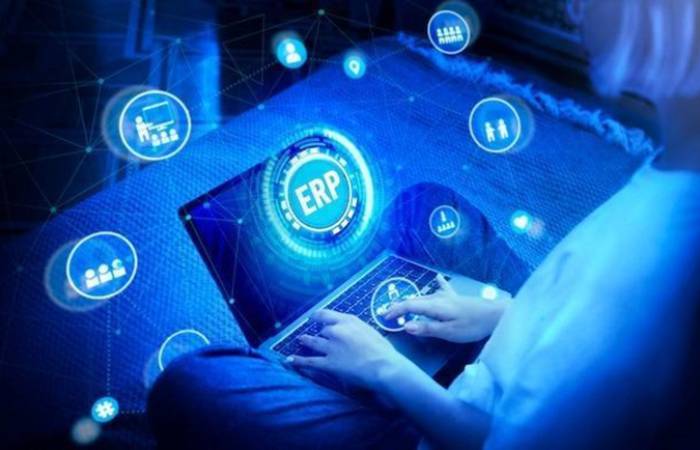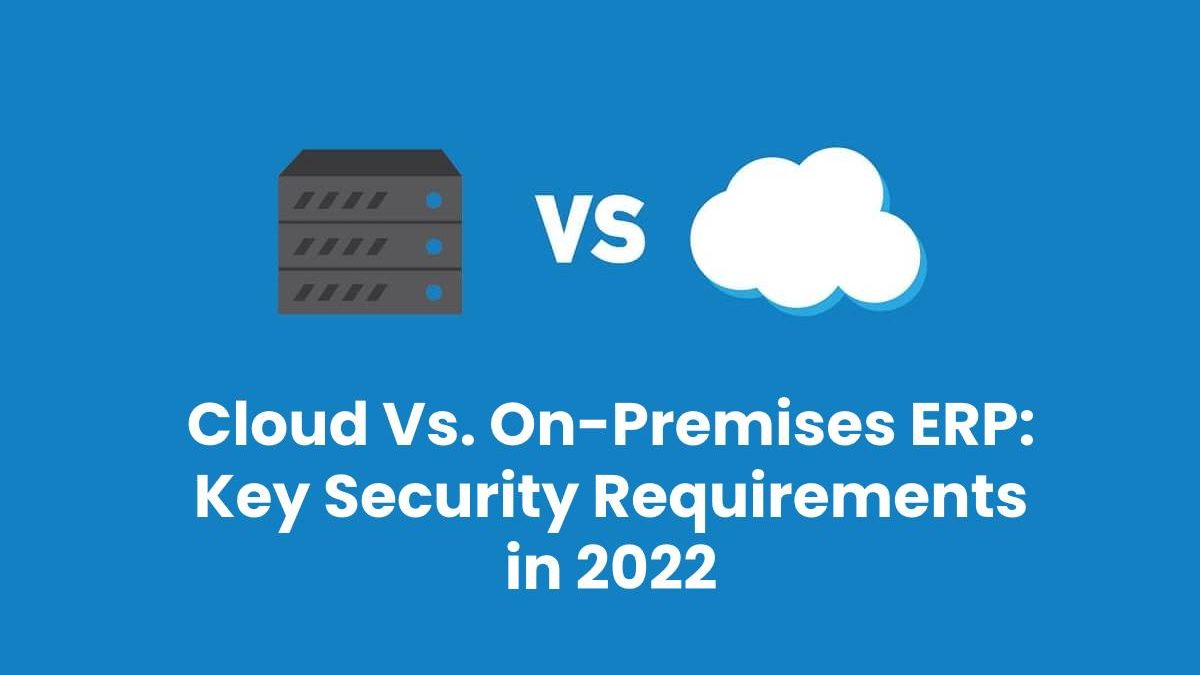Cloud Vs On-Premises ERP Key Security Requirements in 2022
Deciding if your company should invest in ERP software may be daunting, particularly if it is your first time deploying such software.
Yes, it is possible to work without ERP, but that doesn’t mean that you should. Operating without an ERP in today’s competitive economy will put you two steps behind the competition and restrict your potential success.
With cloud computing, the possibilities for ERP integration have grown significantly. Companies may now use cloud-based ERP solutions besides conventional on-premise ERP.
As the acceptance of cloud computing becomes widespread, many vendors have shifted their emphasis from on-premise solutions to cloud delivery models, raising the question, “which is better for my business?” By comparing cloud ERP vs. on-premise ERP, read on to learn which option is more reliable, accessible, and affordable.
Table of Contents
Defining On-Premise

On-premise ERP is installed physically on the company’s servers and is accessible through an internal network. Everything is done internally, from installation through solution operation; maintenance, security, and upgrades must also be handled in-house. After acquiring the program, it must be placed on your servers, requiring the purchase of extra power servers, database software, and operating systems. However, you have total ownership with no third-party involvement.
Defining Cloud Computing

Cloud computing, often referred to as “traditional” or “public,” differs from on-premises software in one crucial sense. A third-party supplier hosts all the data for you in a cloud environment on an as-needed basis.
The public cloud is a multi-tenant environment, so these computer resources are shared by different people or businesses, with all data protected by innovative encryption.
Cloud software, also known as Software-as-a-Service (SaaS), facilitates the delivery of software programs via the Internet on demand on an annual subscription basis.
With this software, cloud service providers host and maintain the application, supporting infrastructure, upgrades, and security patching. Users access the software over the Internet, often via a web browser on their phone, tablet, or PC.
Fundamental Differentiations Between On-Premise and Cloud Corporate Software

There are some key distinctions between an on-premises and a cloud system. Which approach is best for your company totally depends on your requirements and what you’re looking for in a provider.
There are several considerations that a business must examine before deciding on cloud infrastructure. Many businesses cannot shift to the cloud, instead depending on their tested legacy and on-premise systems and software.
Below are some critical aspects to consider while deciding whether to employ on-premise or cloud-based ERP software.
Total Cost of Ownership
Cloud computing has several benefits, including increased scalability, flexibility, and security. But what about the total cost? Some people tout the cost reductions provided by the cloud, while others argue that on-premise services are less expensive.
It is important to perform an analysis. Depending on an organization’s demands, on-premises can sometimes be less expensive. Sometimes the cloud is less costly. However, the analysis shows that most businesses opt for cloud computing as it is less expensive than on-premise technology.
What makes cloud computing less expensive?
Looking at the cloud, many large businesses benefit from the non-requirement of upfront hardware expenditure. They rent gear at a significantly lower monthly/yearly recurring charge. Because of the difference in cost structure, they spend money considerably more intelligently.
Another consideration when rolling out on-premise infrastructure is the “misuse” of IT staffing. The IT departments must spend a great amount of time ensuring that everything runs well and repairs are undertaken when things get broken. This comes with the saying, “physical hardware needs physical upkeep.”
These tasks, however, are eliminated by transferring them to the cloud. This implies that your IT teams focus on more visible or proactive tasks. It enhances the performance of your technology, which improves the overall efficiency of your business.
Cloud-based software is typically a better alternative for small to medium-sized organizations seeking a low barrier of entry and a low-risk investment.
System Upgrades and Enhancements
In the cloud, your original implementation is virtually the only update you will ever have to do. As a result, the cloud solutions provider ensures that your system is regularly maintained, that you always have access to the most up-to-date features and that you never fall behind on product and security ERP implementation upgrades.
Many on-premise businesses postpone updating their ERP software and instead settle on operating their company on out-of-date technology. As a result, about two-thirds of mid-sized organizations use out-of-date ERP software.
Regarding modifications, cloud-based software is more inflexible; many organizations provide à la carte alternatives for a cost. On-premise software triumphs in customization, but unique installations and configurations are expensive.
System Performance and Accessibility
Commercial cloud apps, like Google Drive, Intuit, and Salesforce, are quite similar to Cloud-based access management. These programs enable you to access your client information, send invoices, and exchange documents from any device, wherever you have internet access.
With a platform like SAAS, the software is distributed via a huge data center that is constantly checked and improved to ensure optimal performance.
Your data is protected in the cloud, and individuals, such as your teams and clients with access, may update information from anywhere. The capacity to rapidly and readily access information promotes functionality and fosters creativity. Employees have access to their data no matter where they are, whether they are wandering throughout the shop or working on the road.
Because your data is housed in a secure data center rather than your server room, power outages do not affect the cloud.
On-premise ERP, unlike Cloud ERP, does not provide remote access to the system; most system updates must be done using a PC linked to the servers. As the name shows, you must make adjustments on-site whenever you need to allow access to a new user, restricting the flexibility of this solution.
Aside from the fact that various locations need different servers, on-premise software requires manual data backups and firmware upgrades regularly, resulting in wasted time, cost, and staffing.
Mobility and Deployment Speed
One technology that has helped modern businesses operate and carry out their tasks faster is cloud computing. Companies need not worry about timeliness since the technology enables them to satisfy their infrastructure and information exchange requirements rapidly.
This is also done without the excruciatingly long and capital-intensive process of constructing company-owned infrastructure.
Features include researching vendors, ordering hardware, hiring dedicated staff to manage the hardware, and installing it. Also, acquiring software licenses is an extra task that comes with managing traditional on-premises IT infrastructure. Going down such a path would likely reduce your ability to respond to changing the IT needs of your business.
It may take weeks or months to set up or upgrade your internal IT infrastructure. Your rivals may take advantage of the rapid pace of IT implementation to gain an edge over you.
Why Does ERP Security Matter in 2022?
Implementing cloud ERP security is a joint duty of the cloud service provider (CSP) and the company that leases infrastructure. Cloud security may be a legal gray area if CSP agreements are not carefully drafted.
Cyberattacks are always dangerous, especially now, when many companies have been working remotely because of the COVID-19 crisis. We should understand that it creates different vulnerabilities in the local IT infrastructure that hackers might use to attack us.
Cloud solutions are much more secure in this case because of the greater number of skilled experts and the greater investment that goes into cloud technologies and security. The investment in that area is much greater than small and middle-sized businesses can afford.
Pros and Cons of On-premise Systems
Below are some advantages of an on-premise system:
- Business data is physically in the office.
- It meets standards and is approved for use by different industries (banks, healthcare institutions, education centers, governmental branches, etc.).
- It is a one-time investment—you pay the most at the start—to purchase a license and equipment. You pay less for maintenance during the second and subsequent years.
Some disadvantages of an on-premise system:
- You need to invest in IT infrastructure, its support, updates, and IT experts.
- Your IT infrastructure might be more vulnerable to external attacks without decent security.
- There is always the possibility of error by staff (human error).
- An employee might accidentally infect their device or the whole local network.
Pros and Cons of Cloud-Based Software
Cloud-based software advantages:
- Flexibility and scalability
- Availability and ease of access from anywhere in the world.
- Cross-platformed (available from any device via a web browser)
- Auto updated (always the most recent version in use).
- Purchase and maintenance of your IT infrastructure are unnecessary.
Cloud-based software disadvantages:
- Business data is stored in the cloud; however, a side provider guarantees safety.
- Annual/monthly payment is required (license prolongation, tech support, updates, server placement, etc.).
Summary
Many businesses cannot transit to the cloud, instead depending on the on-premise systems and software to conduct businesses.
On-premise applications are secure. They enable organizations to keep control that the cloud cannot always provide. However, IT decision-makers believe that, besides on-premise and legacy systems, they will need to use new cloud and SaaS apps to fulfill their business objectives.

